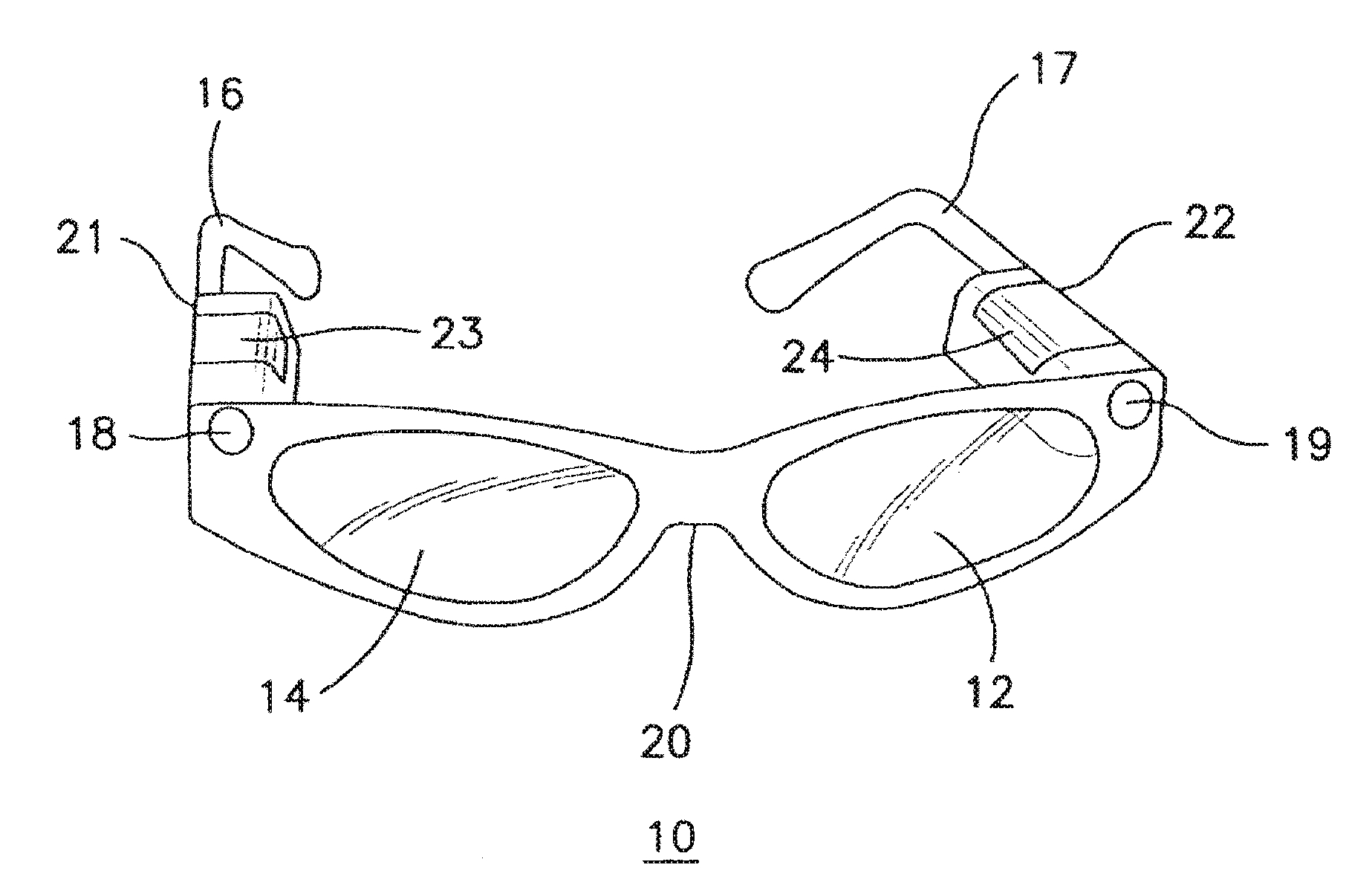Illuminated low-vision spectacles
a low-vision, spectacle technology, applied in the field of vision enhancement systems, can solve the problems of inability to adequately compensate for vision impairment, poor vision in low vision, and low vision rehabilitation in no way affect the physical condition of the eye, so as to improve the reading of text
- Summary
- Abstract
- Description
- Claims
- Application Information
AI Technical Summary
Benefits of technology
Problems solved by technology
Method used
Image
Examples
Embodiment Construction
[0022]The present invention is predicated on the discovery that low vision in patients suffering therefrom can be vastly improved by employing lighted reading glasses wherein the lenses contain induced prism and the glasses are equipped with devices that project light onto the field of vision. The crux of the invention resides in the facts that (1) the lenses of the spectacles preferably have a dioptic power of from about +4.00 to about +20.00 and a prism preferably of from about 4 PD to about 22 PD and (2) the eyeglasses are able to project sufficient light on the area of focus to aid in the reading of written or typed information therein.
[0023]The eyeglasses or spectacles of the invention are far less bulky, transportable and easier to use than the reading aids heretofore employed for those with low vision.
[0024]The invention is further illustrated by reference to the drawing which depicts reading glasses or spectacles 10 according to the invention, in which are located, mounted i...
PUM
 Login to View More
Login to View More Abstract
Description
Claims
Application Information
 Login to View More
Login to View More - R&D
- Intellectual Property
- Life Sciences
- Materials
- Tech Scout
- Unparalleled Data Quality
- Higher Quality Content
- 60% Fewer Hallucinations
Browse by: Latest US Patents, China's latest patents, Technical Efficacy Thesaurus, Application Domain, Technology Topic, Popular Technical Reports.
© 2025 PatSnap. All rights reserved.Legal|Privacy policy|Modern Slavery Act Transparency Statement|Sitemap|About US| Contact US: help@patsnap.com


